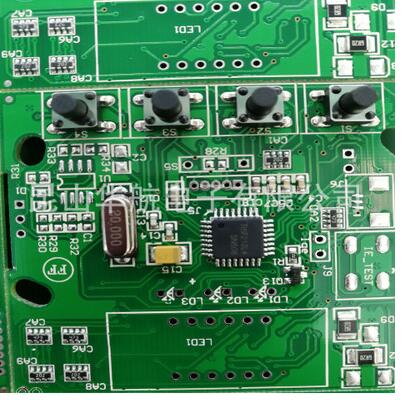Talk about the temperature curve in the production process of PCB assembly
Regarding the temperature curve in the PCB assembly production process, there are several typical temperature curves? It is usually divided into three types: triangular temperature curve, heating-heating-peak temperature curve, and low-peak temperature curve. Please see the detailed introduction of Baiqiancheng Electronics Editor below.
Triangle temperature curve
(1) Triangular temperature curve suitable for simple PCB assembly products
For simple products, a triangular temperature curve can be used, because the PCB is relatively easy to heat, the components are close to the temperature of the printed board, and the temperature difference on the PCB surface is small.
When the tin slide has the appropriate formula, the triangular temperature curve will result in brighter solder joints. But the activation time and temperature of the fouling powder must
Adapt to the higher melting temperature of lead-free solder paste. The heating rate of the triangular curve is controlled as a whole, generally 1-1.5 degree Celsius. Compared with the traditional insulation peak curve, the energy cost is lower. It is generally not recommended to use this curve.
Recommended heating-heating-peak temperature curve

The heating-heat preservation peak temperature curve is also called the tent curve. This figure shows the recommended temperature curve of heating-holding-peak temperature (same as figure 1), where curve 1 is the temperature curve of Sn37Pb soldering, and curve 2 is the temperature curve of lead-free Sn-Ag-Cu solder paste. It can be seen from the figure that the limit temperature of the component and the traditional FR4 printed board is 245 degree Celsius, and the process window ratio of lead-free soldering is Sn-37Pb.
Much narrower. Therefore, lead-free soldering requires slow preheating, fully preheating the PCB and reducing the PCB surface temperature difference △, so as to achieve a lower peak temperature (235 ~ 245 degree Celsius) to avoid damage to the components and the FR-4 substrate PCB. The heating-heating-peak temperature curve requirements of this section are as follows.
1. The heating rate should be limited to 0.5 ~ 1 degree Celsius/s or less than 4 degree Celsius/s, depending on the solder paste and components.
2. The formula of the fouling powder in the solder paste should conform to the curve. If the holding temperature is too high, the performance of the solder paste will be impaired.
3. The second temperature rise ramp is at the entrance of the peak area. The typical slope is 3 degree Celsius/s. The time above the liquidus line is 50 ~ 60s, and the peak temperature is 235 ~ 245 degree Celsius.
4. In the cooling zone, in order to prevent the growth and separation of crystalline particles in the solder joints, rapid cooling of the solder joints is required, but special attention should be paid to reducing the pressure. For example, the maximum cooling rate of ceramic chip capacitors is -2 to -4 degree Celsius/s.
Low peak temperature curve
The low peak temperature curve is to first increase the slow heating and sufficient preheating to reduce the PCB surface temperature difference in the reflow area. Large components and large heat capacity locations usually lag behind small components to reach peak temperatures. Figure 3 is a schematic diagram of the low peak temperature (230-240 degree Celsius) curve. In the figure, the solid line is the temperature curve of the small component. The dashed line is a large-component temperature curve. When the small element reaches the peak temperature, keep the low peak temperature and wide peak time, let the small element wait for the large element; the other large element also reaches the peak temperature and keep it for a few seconds, and then cool again. This measure can prevent component damage.
The low peak temperature (230 ~ 240 degree Celsius) is close to the peak temperature of Sn-37Pb, so the risk of damage to the equipment is small and the energy consumption is low. However, the adjustment of PCB layout, thermal design, reflow soldering process curve, process control and requirements for the lateral temperature uniformity of the device are relatively high. The low peak temperature curve is not applicable to all products. In actual production, the temperature curve must be set according to the specific conditions of the PCB, components, solder paste, etc., and complex boards may require 260 degree Celsius.
Through the research of welding theory, we can see that the welding process involves physical reactions such as wetting, viscosity, capillary phenomenon, heat conduction, diffusion, dissolution, and chemical reactions of scaling powders, such as decomposition, oxidation, reduction, etc. It also involves metallurgy and alloys. Layer, metallography, aging, etc., this is a very complicated process. In the SMT patch process, the soldering principle must be applied to correctly set the reflow soldering temperature curve. In the production of PCB assembly, we must master the correct process method at the same time, and through process control, SMT can be realized by printing solder paste and mounting components. Finally, the pass rate of reflow oven SMA achieves zero reflow quality (no) Defects or close to zero defects, while requiring all solder joints to achieve a certain mechanical strength, only such products can achieve high quality and high reliability.
The above is the relevant content of the temperature curve in the PCB assembly production process shared by the electronic editor.